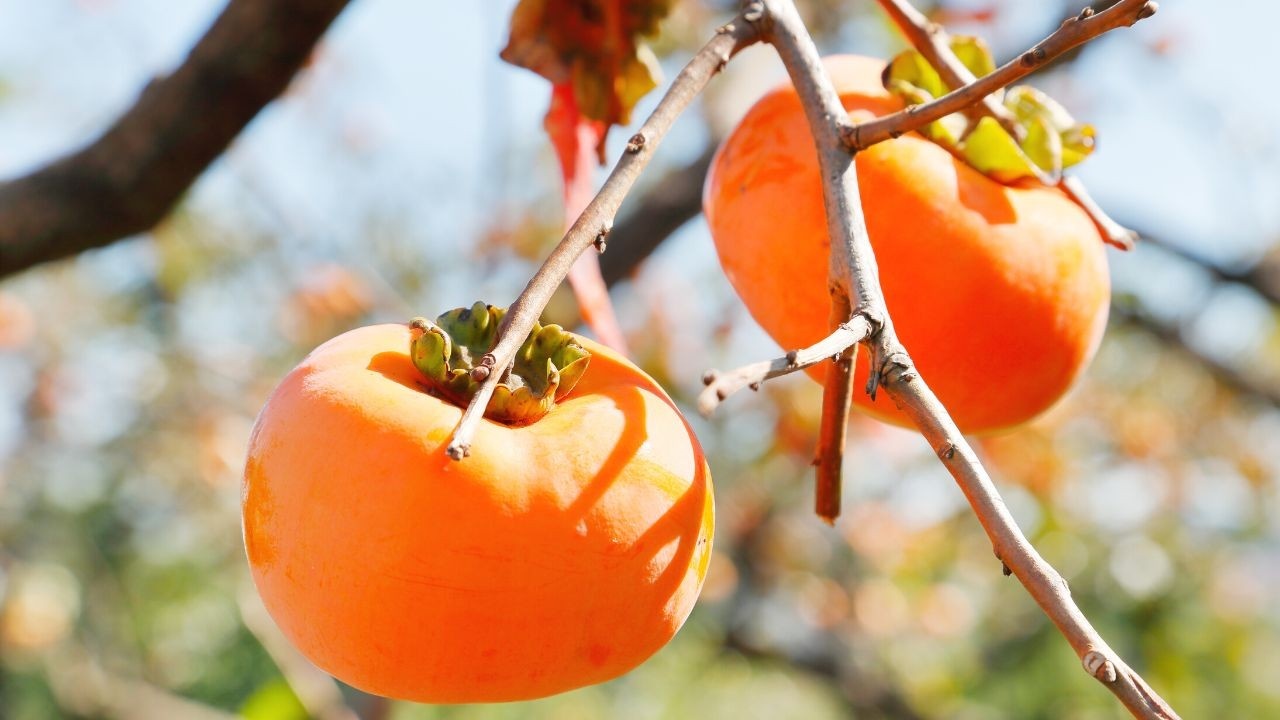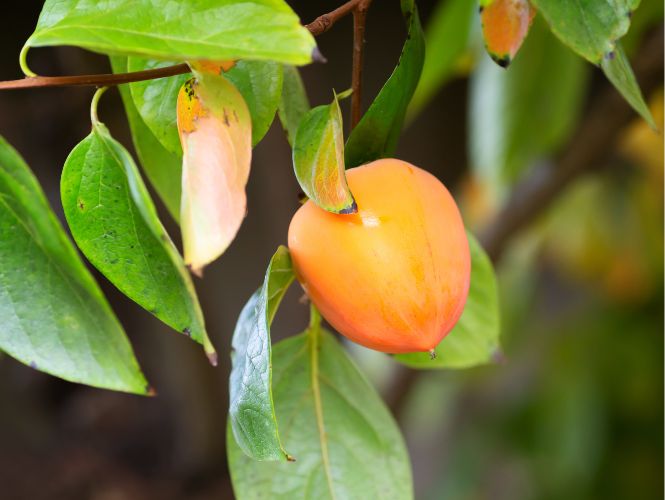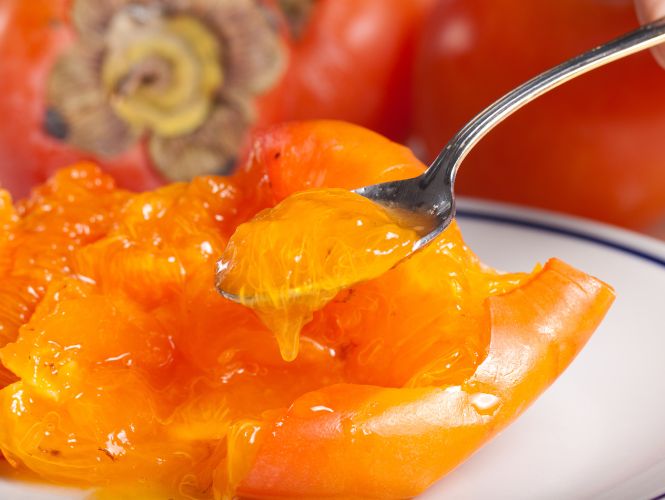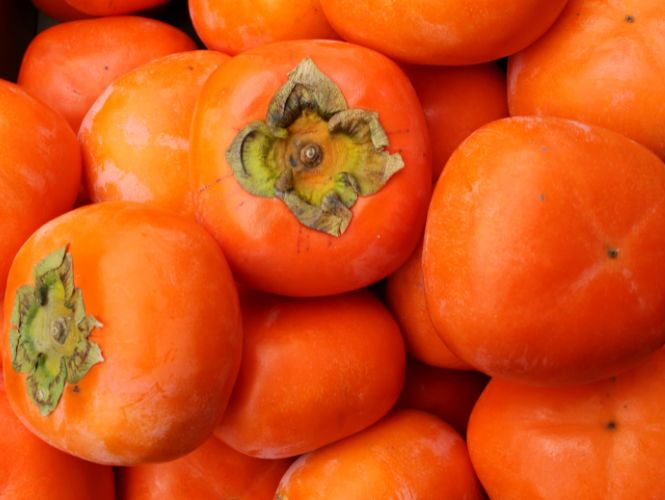How to Eat Persimmons and Ways to Enjoy Them
Oct 24, 2022
Yes, it’s that time again…Fall, and along with it comes a delectable selection of Fall season fruits and vegetables. For those in the Northern Hemisphere, this could mean time to enjoy a small, orange, plump and sweet delight…persimmons! Never heard of them or tried them before? In this article, we’ll learn more about this unique fruit and what’s in them nutritionally. I’ll also show you why this is a Fall fruit worth loving and top ways to enjoy them!
What Exactly are Persimmons?
If you’ve never heard of or seen persimmons before, you’re not alone. Many people are not familiar with them, and may not have even tried them before. Originating from China, persimmons are orangey-red fruits that grow on trees and are harvested starting in the Fall from October through approximately January. There are actually over 400 species of persimmons planted worldwide, including a native American persimmon that grows in some parts of the United States. Though categorized as fruit from a consumer perspective, persimmons are considered berries like avocados, from a botanical perspective!
Persimmons can be broadly divided into two groups – astringent and non-astringent. Persimmons in the astringent category contain a high content of soluble tannins, so when eaten before they are fully ripe, it will likely cause your mouth to pucker up with its slight bitterness.
A Powerhouse of Nutrients
Not surprisingly, like many other whole plant-based foods, persimmons come packed with nutrients. One raw Japanese persimmon (168g) provides nearly a gram of protein, 6 grams of fiber, 270 milligrams of potassium, 1400 micrograms Lutein and zeaxanthin, 267 micrograms lycopene, 4.37 micrograms vitamin K, along with many other nutrients. Key phytochemicals found in persimmons include carotenoids such as beta-carotene, tannins, phenolic compounds, catechins, oleanolic acid, and proanthocyanidins. The beneficial effects of persimmon leaves and the flesh itself have been studied. Through research, constituents like carotenoids, tannins, flavonoids, flavanols and anthocyanidins have been found to have antioxidant, anti-carcinogenic, anti-inflammatory, cardioprotective and free radical scavenging properties.
How to Enjoy Persimmons
Now onto the practical, fun aspects of persimmons – just how do you eat them? The key to enjoying persimmons is knowing which variety you’ve bought, so you know when the best time is to dig into them. Let’s look more closely now at two Asian varieties most commonly seen in supermarkets - Hachiya and Fuyu.
Hachiya

The Hachiya persimmon is slightly elongated and oval-shaped, similar to that of an acorn. It is typically orange but turns a dark orange when it becomes over-ripe. Once bought, store these persimmons on the countertop for a few days, until they have over-ripened and turned dark orange. If you have a lot of these persimmons on your hands, you can place some temporarily in the fridge to slow down the ripening process.
Since Hachiya persimmons fall into the astringent category, they must not be eaten until they have turned super ripe, dark orange and are very soft to the touch, with a jelly-like interior. This is when the soluble tannins have polymerized. Hachiya persimmons can be enjoyed on their own, made into dried persimmons, added into smoothies, used in baked goods or to make jams.

If you would like to enjoy fresh Hachiya persimmons on their own, you have two ways to do it. First, cut out the stem top (and tougher flesh attached under the stem), then remove the edible peel and scoop out the bright orange jelly-like flesh into a bowl, where you can then easily enjoy its honey-like sweetness. Alternatively, just cut off the stem top and remove the tougher flesh portion attached to the stem underneath, then use a spoon to scoop out the flesh straight from within the persimmon ‘bowl’!
Fuyu

It’s easy to tell a Fuyu persimmon from a Hachiya persimmon. That’s because fuyu persimmons are typically lighter orange in color, have a flatter bottom, and have a more squarish squat shape.
What’s the best part about these Fuyu persimmons? It’s that they belong to the non-astringent variety, so that means you can pretty much enjoy them at any time – with or without the edible peel on! Simply set it out on the countertop for a few days, then you can further store them for a few days in the fridge if you have more than you can eat at one time. Fuyu persimmons taste best when they are just a tiny bit soft to the touch, but really, they taste good (to me at least) even when they are crunchy and crisp like a fresh apple. You can enjoy Fuyu persimmons sliced up on their own for a tasty snack, or add them chopped or diced into a salad, to breakfast cereals or into your hot morning bowl of oats.
Persimmons – Loved by All
Now for a fun persimmons story. My mother had a close friend who lived near us and she had a persimmon tree in her backyard. I think she must have planted it herself. But how blessed we were to have this family friend, because she would often come by to drop off a bagful of her home-grown persimmons (sometimes two!) in the Fall. How delicious they were!
I think that tree must have been around for at least 10-15 years and is definitely a labor of love, because if you know anything about persimmon trees, you would know that they can take up to 7-10 years to bear fruit. But as it turns out, we humans are not the only ones looking out for persimmons come Fall… so were the animals! Yes, she would tell us stories of how birds and squirrels would come to enjoy its fruits too, and sometimes she would need to race to pick the ripe fruit before these other persimmon lovers got to their juicy snack! But she always lovingly gave us the nice unblemished ones and kept the less perfect ones for herself. As you can see, persimmons can be loved by both humans and animals alike!
So, never had a persimmon before? Well, there’s always a first time, so why not try one this Fall?
Sources:
- Hoose S. What Are the Different Types of Persimmons? Sfgate.com. Updated December 15, 2021. Accessed September 30, 2022.
- Persimmons, Japanese, raw. USDA FoodData Central. Accessed September 30, 2022.
- Butt MS, Sultan MT, Aziz M, Naz A, Ahmed W, Kumar N, Imran M. Persimmon (Diospyros kaki) fruit: hidden phytochemicals and health claims. EXCLI J. 2015 May 4;14:542-61. Accessed September 30, 2022.
- M González C, Hernando I, Moraga G. In Vitro and In Vivo Digestion of Persimmon and Derived Products: A Review. Foods. 2021 Dec 11;10(12):3083. Accessed September 30, 2022.



